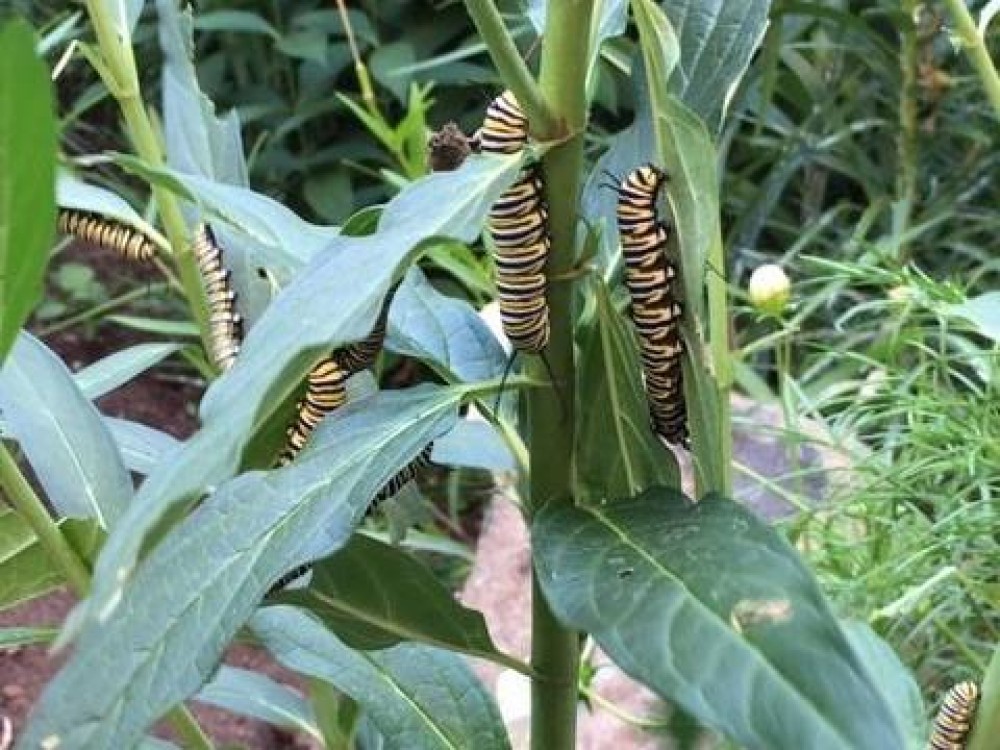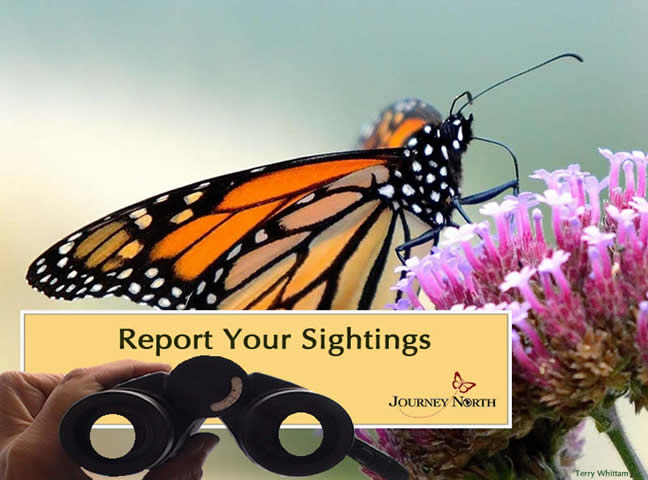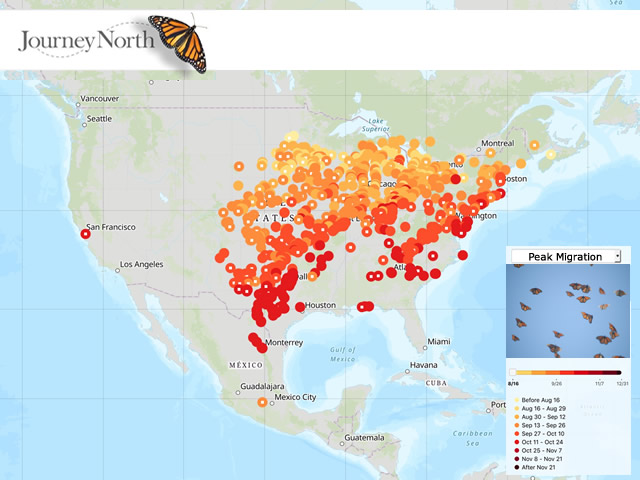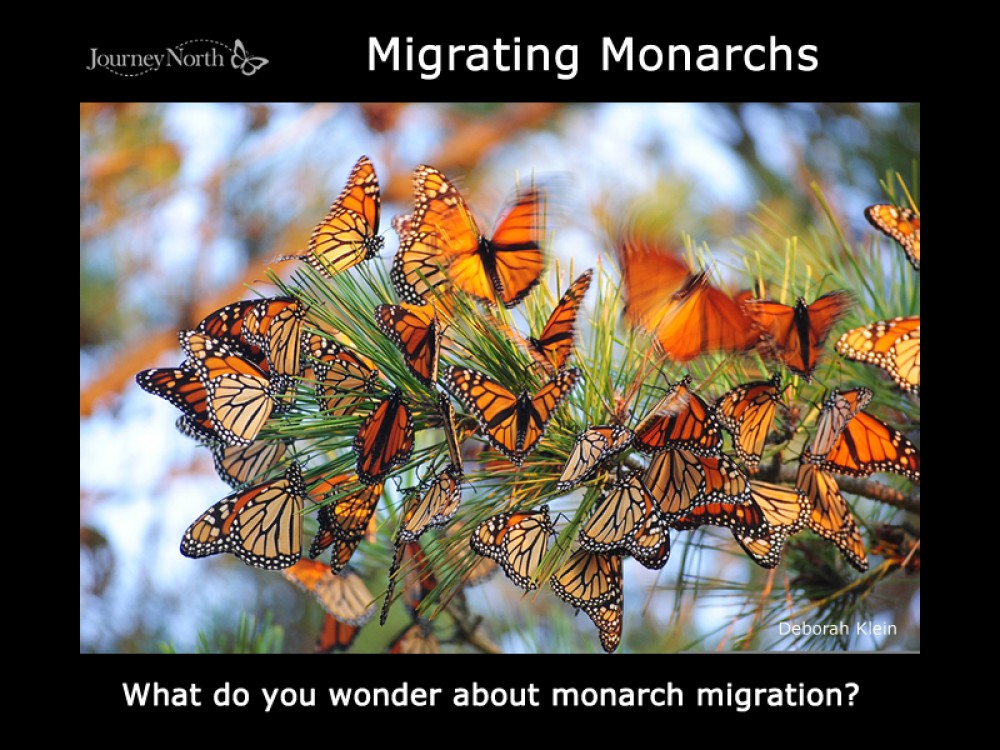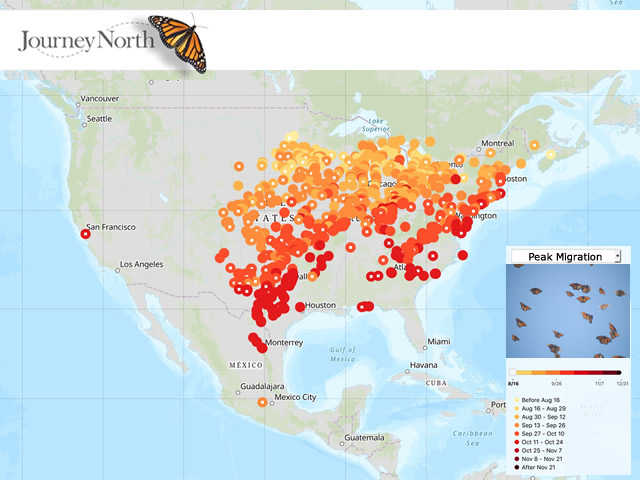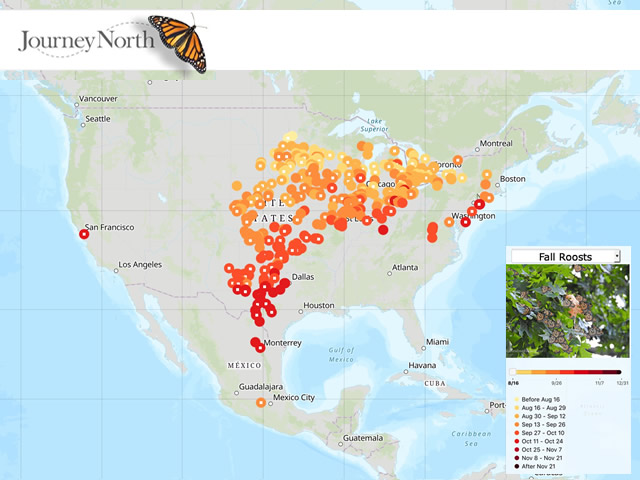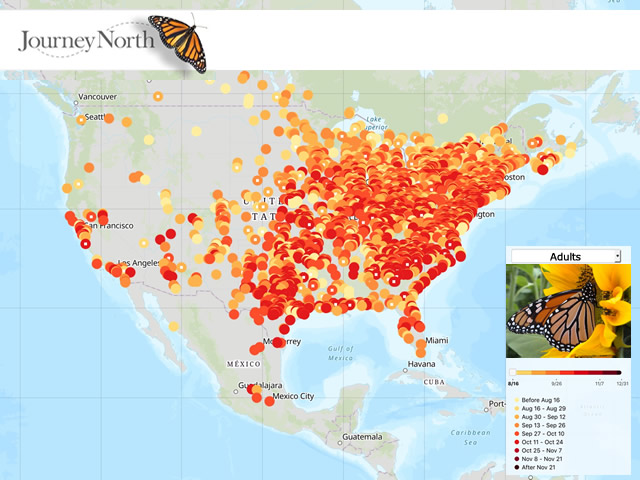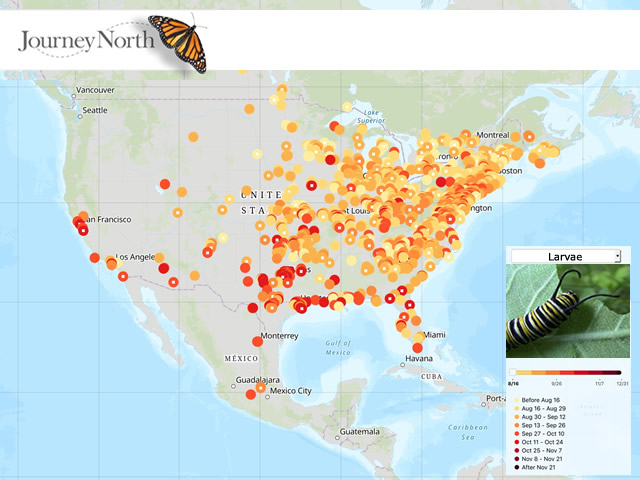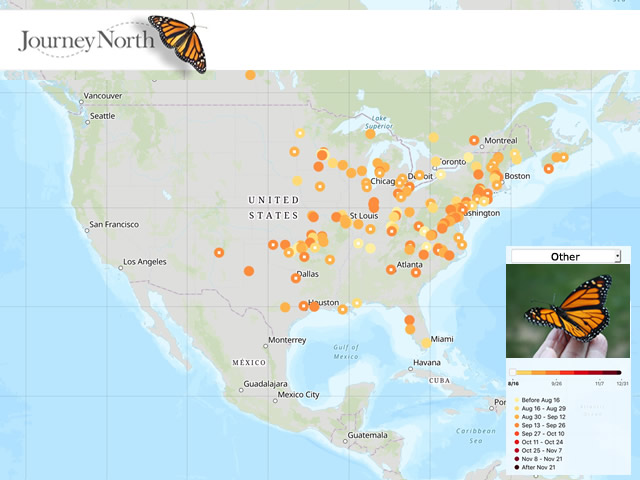Get Ready for an Exciting Fall Migration!
So Many Caterpillars!
"More caterpillars in my garden this summer than ever before," stated Journey North citizen scientist, Dottie, from Camden, Maine. Observers continue to report eggs and caterpillars sightings, some reporting the most they have seen in years. Some images of multiple caterpillars on milkweed plants are breathtaking -- like those included in this side bar. Please continue to report first sightings of eggs and larvae in your area.
Three Signs Of Fall Migration
Declining daylength (photoperiod) is a central cue that triggers changes in monarchs both in terms of physiology and behavior. Beginning in mid-August in the north, adults are in diapause when they emerge from the chrysalis. They are full grown — but not reproductively mature. Their reproductive development is on pause. These monarchs will not complete development and begin to mate until next spring in Mexico. Watch for signs of migratory monarchs:
- flying in directional flight
- clustering in overnight roosts
- nectaring intensely as monarchs shift from breeding to intense feeding. They must build body fat to fuel migration and to survive the winter in Mexico.
Fall Roosts Already Reported
Overnight roosts are a classic sign of fall migration. Three roosts have been reported in Ontario, Ohio and Iowa.
Report All Sightings
With the abundance of caterpillars and roosts, get ready for an eventful fall migration!
When you see a monarch, we want to know. Please report your sightings of monarch adults, eggs and larvae. Start now — and continue to report until you see your last monarchs of the season. Fall migration is about to begin!
Three Signs Of Migratory Monarchs
Fall Monarch Migration 2019
Please report all monarchs you see: Adults, Eggs & Larvae, Overnight Roosts, Peak Migration Events

